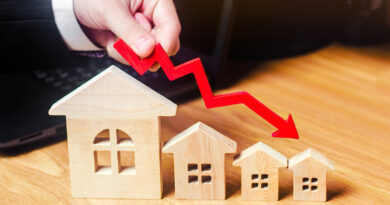The Fed’s Decision To Raise The Rate Again Will Mean Short-Term Pain
The Federal Reserve raised its benchmark lending rate by a quarter point Wednesday, lifting interest rates to their highest level in 22 years, which has many in the mortgage industry predicting more tough times ahead.
In discussing the impact of this development, Brad Sivert, Head of Marketing & Proptech at Tavant, theorizes, “While it’s not surprising, it does not help the shortage of homes affordability, especially given our housing shortage. Things were finally looking slightly optimistic for homebuyers and the lending industry… This recent hike makes it more of an unknown, a “wait and see,” which rarely bodes well for anyone.”
Michele Raneri, Vice President and Head of U.S. Research and Consulting at TransUnion, says this rate hike “means that while significant progress has been made when it comes to inflation, the Fed believes that we aren’t quite at a point yet where we can back off completely from raising interest rates. We may be waiting for a protracted period of cooling inflation before we see a halt to interest rate hikes.
“The mortgage market, which will likely see another uptick in interest rates, may continue to be slow, as many consumers may hold off on making a home purchase in hopes that interest rates stabilize and hopefully, come down soon thereafter. It remains to be seen whether cooling inflation may help motivate consumers who had been holding off due to increasing cost of living expenses.” Raneri concludes.
And the future of interest rates is uncertain. “I wouldn’t want to go automatically to every other meeting because I just don’t think that’s — I think it’s not an environment where we want to provide a lot of forward guidance,” Federal Reserve Chair Jerome Powell said during a press conference after the decision to raise the rate was released.
“There’s a lot of uncertainty out there. We just want to keep moving at what we think is the right pace,” Powell said. “It’s possible that we would move at consecutive meetings. We’re not taking that off the table. Or we might not. It really depends on what the data tells us.”
MBA SVP and Chief Economist Mike Fratantoni, believes that The Fed is “responding to high, but moderating inflation and a job market that remains quite strong. However, both are now moving in a direction which could allow this hike to be the Fed’s last for this cycle. We expect that to be the case, but for the Fed to hold off on any rate cuts until we are well into 2024.
“While the market for new home sales has recovered considerably over the past few months, the pace of overall housing market activity remains quite slow,” continued Fratantoni. “Although the lack of inventory remains a constraint, housing affordability challenges continue to delay many potential buyers from entering the market. We do expect mortgage rates to trend down once the FOMC clearly signals that they have reached the peak for this cycle, as the reduction in uncertainty with respect to the direction of rates should narrow the spread of mortgage rates relative to Treasury benchmarks.”
Josh Friend, Founder and CEO at CRM vendor Insellerate, agrees that this might not be great news for now, but sees it as a positive for the future. “The Federal Reserve’s bold decision to raise rates to their highest level in two decades speaks volumes about their concerted efforts to combat inflation,” he says. “Such a move historically leads to a cooling off of the market, subsequently impacting various sectors, including commodities and bonds. If the trend holds true, we can expect mortgage rates to follow suit and potentially head downwards. This development could hold promising implications for the mortgage space in the long run.”

The Place for Lending Visionaries and Thought Leaders. We take you beyond the latest news and trends to help you grow your lending business.



